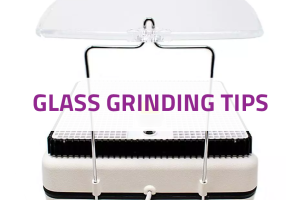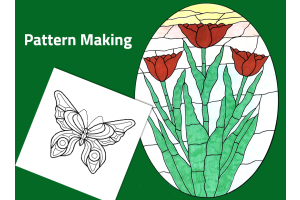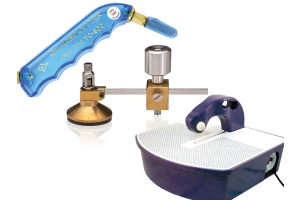We use cookies to make your experience better. To comply with the new e-Privacy directive, we need to ask for your consent to set the cookies. Learn more.
Unleashing Creativity with Glass Fusing: A Comprehensive Guide

Unleashing Creativity with Glass Fusing: A Comprehensive Guide
Glass fusing is an extraordinary art form that combines innovation, craftsmanship, and the enchanting beauty of glass to create stunning masterpieces. This centuries-old technique has captured the hearts of artists, hobbyists, and designers alike. In this blog post, we will explore the captivating world of glass fusing, its techniques, tools, and the endless possibilities it offers to unleash your creative spirit.
The Art of Glass Fusing
Glass fusing is a method of joining pieces of glass together through high-temperature firing in a kiln. Artists use various forms of glass, including sheets, rods, and powdered glass (frits), to create unique designs and patterns. The fused glass can be flat or shaped into bowls, sculptures, jewelry, and much more. The process of fusing glass enables artists to produce intricate patterns, gradients, and textures, making it a versatile and captivating art form.
Tools and Materials
To embark on your glass fusing journey, you will need some essential tools and materials. These may include:
Glass Cutter: A precise glass cutter is essential for creating clean and accurate shapes from glass sheets.
Kiln: A specialized glass fusing kiln is required for firing the glass at high temperatures to bond the pieces together.
Safety Gear: Safety should never be overlooked. Always wear safety glasses, gloves, and protective clothing when working with glass and kilns.

Glass: Select a variety of colored and clear glass sheets, rods, and frits to add depth and character to your creations.
Molds and Shaping Tools: Molds are used to create three-dimensional shapes, while shaping tools help manipulate the glass during the fusing process.
Techniques
There are several popular glass fusing techniques that allow artists to achieve remarkable effects:
Full-Fuse: This technique involves fusing multiple glass pieces together to create a solid, single-layered sheet.
Tack-Fuse: In this method, the glass pieces are fused together just enough to stick together, retaining some texture and dimension.
Slumping: Slumping is the process of shaping fused glass by placing it over or into a mold and allowing it to soften and take the desired shape during a second firing.
Glass Casting: Glass billets are broken into chunks of glass to fill deep molds to create three-dimensional glass sculptures.

Inspiration and Design
The beauty of glass fusing lies in its boundless creative possibilities. Draw inspiration from nature, geometric patterns, abstract concepts, or even your emotions. Experiment with colors, shapes, and textures to develop your unique style. Digital design tools and traditional sketching can help visualize your ideas before you begin crafting.

Fusing Process
Prepare your glass pieces by cutting them into desired shapes. Arrange the pieces on a kiln shelf, ensuring they are clean and free of debris. Program your kiln with the appropriate firing schedule, taking into account the thickness of the glass and desired effect. Once the fusing process is complete, let the kiln cool down gradually to avoid stress on the glass.
Finishing Touches
After fusing, you may want to cold work the glass by grinding, polishing, or sandblasting the surface for a refined finish. Consider adding hardware or mounting options for functional pieces like jewelry or decorative items.
Glass fusing is an art form that encourages endless experimentation and discovery. Whether you're a seasoned artist or a novice, the possibilities of this mesmerizing craft are infinite. From jewelry to functional art pieces and beyond, glass fusing invites you to delve into a world of color, texture, and imagination. So, gather your tools, let your creativity flow, and unlock the mesmerizing world of glass fusing. Your artistic journey awaits!










